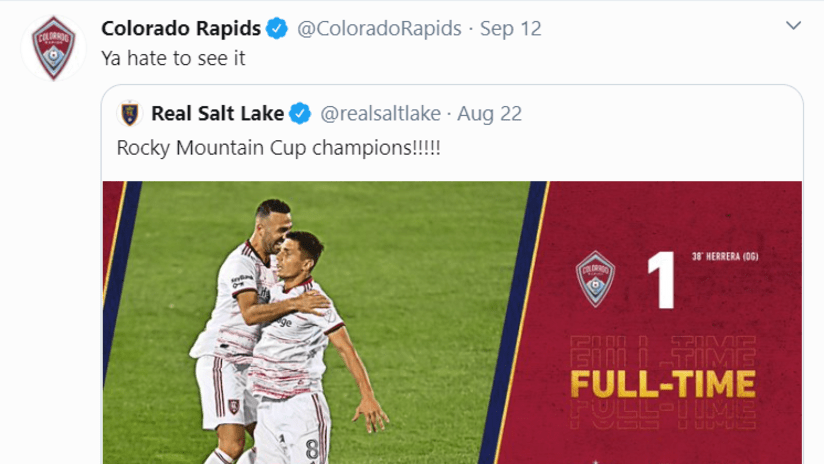For my entire life US fans have asked "why don't we crush Concacaf minnows like Mexico does?" Even when the US were winning back-to-back-to-back Hexagonals for the 2006, 2010 and 2014 World Cups, there was always a sizable portion of the fanbase that wanted to know, just ... why? Why did we need late Frankie Hejduk headers or a moment of Landon Donovan brilliance or the like to come out of those types of games with three points, when El Tri would always seemingly drop three in the first half, add another on the hour mark, and cruise home with at least a 4-0 dub? It's been a source of legitimate frustration for decades.
On Wednesday night in Fort Lauderdale, the US stomped a hole in El Salvador, taking a 5-0 lead inside the first half-hour and, in very El Tri fashion, cruising home for the 6-0 final. They crushed the minnow.
If you take nothing else away from this win, and from last month's 6-2 drubbing of Panama, you should take that. El Salvador are maybe about the 10th-best Concacaf side, and the US C team made them look like they're roughly about the 15th-best Concacaf side. Winning big games against top teams is the ultimate measure of whether or not you're actually good, and there was no way the US were going to show that in any of the past three friendlies. But smashing the ever-loving hell out of bad teams is a box most teams good teams do, eventually, check. And now the US are doing that with some semblance of regularity.
() There is some debate as to how good-or-bad El Salvador actually are. Here is a fact: The only thing that kept them out of the Hex was a global pandemic. They were gonna be in ahead of the same Canada side that beat the US 2-0 last year. Still though, I'm pretty sure they're very bad.
I wouldn't blame you if you decided to take nothing but that away from this game, to be honest. It is dangerous to read too much into any friendly, and it is even more dangerous to read too much into a non-international date friendly against a minnow featuring an experimental US side. So I'm just going to a simple bullet-pointed list:
• A bunch of young players made their debuts, and the vast majority of them both met the intensity of the moment — no matter who you're playing against, making your senior international debut is indeed a moment — and made a few very nice plays.
A lot of these young guys are dual- or tri-nationals, not yet cap-tied to the US and still able to switch allegiance. Wins like this one are, I imagine, a ton of fun to take part in, and probably leave a very good impression.
• The Homegrown initiative is working. Seven of the 11 starters are MLS Homegrowns, and as Taylor Twellman said on the broadcast, performances like this against Concacaf teams are fairly tangible proof that the investment is paying off.
Because of the way that next year's schedule works out, a large number of these guys will be counted on for Olympic qualifying (only players born January 1, 1997, and after are age-eligible), and then for the Olympics itself, since European teams are unlikely to release the likes of Christian Pulisic, Weston McKennie, Sergino Dest, Tyler Adams et al.
MLS teams usually play nicer with releasing players.
Which is to say that a lot of the guys on the field tonight were playing for, quite possibly, a chance at the Olympics. The across-the-board effort level suggests they knew as much.
• Speaking of playing nicer, I enjoyed this:
I don't think Sam Vines had that in his locker in 2019, but he truly does in 2020.
What I liked even more, though, was that this is an established pattern of play from the US at this point. When the opponents deny the d-mid (Jackson Yueill on this night), the on-ball center back is expected to step forward on the ball and engage the second line of opposition defense while the strong-side fullback flares to the touchline and the strong-side winger tucks inside.
We saw this same sequence multiple times in the first half, and then several times in the second half — usually on the right side, with Julian Araujo playing first Paul Arriola, then Ayo Akinola through.
This is not "creative" play — in fact, I'd argue it's the exact opposite of that. It's well-rehearsed and meticulously drilled pattern play. You don't have to be creative to make it work, you have to be precise.
• El Salvador eventually decided to sit on Yueill full-time and refuse to let him run the game, because any time they gave him an inch he did this:
Those diagonals are deadly. I wish Arriola had squared that, but given the scoreline at the time I understand his decision to be a little bit selfish.
• That's all from the USMNT for 2020. It felt like an extremely productive year — lots of new faces, many of them productive, and a significant amount of clarity in Gregg Berhalter's attack-via-possession approach — given the unprecedented roadblocks thrown up by basically everything happening in the world.
They made the best of a bad situation. Now let's hope that 2021 is full of pleasant, instead of unpleasant, surprises.











